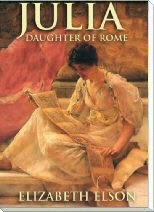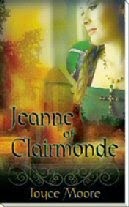Today I welcome author Patricia Stoltey to my Historical Fiction blog. Readers, pull up a chair and let's talk about books.
Joyce: Hi Pat, and thanks for taking the time from your busy schedule to answer some questions for our readers. I’m always curious as to when an author began writing, and how long it took to get published.
Pat: We’re not going to count the box of really bad poetry and short stories I wrote in my 20s and 30s, are we? My first attempt at a novel was The Troubleshooter, an action-adventure tale my brother and I wrote in the mid-80s. That book never made it to print, but Books in Motion turned the umpteenth revision into an audiobook in 1999. That only took thirteen years. Not bad for a first novel. The first draft of my second novel, an attempt at international intrigue and suspense, sits on a table in my office, waiting for me to decide it’s worth a rewrite from beginning to end.
My writing life improved in fall 2003. I’d retired from a demanding job in the real world and realized I had to find more to do than read novels and crochet afghans, I took a novel-writing class from a local author. When the class was over, several of the attendees got together and formed a critique group. The novel I started for that class was The Prairie Grass Murders, published in hardcover in 2007.
Joyce: How did you break into publishing, Pat?
Pat: After completing the4th draft of The Prairie Grass Murders, I unsuccessfully pitched it to an agent at the 2004 Rocky Mountain Fiction Writers Colorado Gold Conference. After a few more queries also proved unsuccessful, I did another major revision, then pitched that 5th draft during a critique workshop at the 2005 conference. This time I received valuable feedback from the editor running the workshop, as well as an invitation to submit after revising the manuscript once again. Draft number six was the winner. My contract with Five Star/Gage led to a hard cover edition aimed at the library market.
The Prairie Grass Murders was also an audiobook with Books in Motion and a mass market paperback reprint with Harlequin Worldwide. The second Sylvia and Willie mystery, The Desert Hedge Murders, is now available in hard cover and as a
Harlequin paperback.
Joyce: What genre or sub-genre do you write? Why did you choose this genre?
Pat: I focused on amateur sleuth mysteries for my first two books. I read a lot of mysteries and admired the way good authors think up plot twists, plant clues, and create great characters. I kept wondering if I could do that, so I finally gave it a try. I discovered it’s not as easy as it looks.
Joyce: (laughing). Nothing ever is, is it? So, tell us how much time you devote to writing each day.
Pat: I don’t write every day and that’s a problem I’m trying to overcome. After our books are published, we often get caught up in book promotion and spend way too much time at social media, personal appearances, conferences, and other opportunities to connect with readers. In the past, I’ve called myself a binge writer because I spend months thinking about a book without putting anything on paper, and then sit down and write like crazy until I finish a first draft. Lately, I haven’t even done that. It took me more than a year to get the revisions done on my last novel so I could start submitting to agents.
Joyce: Can we get a sneak peek at what you’re working on now?
Pat: Doing the queries and submissions for a historical women’s fiction, which has a working title of Wishing Caswell Dead. I’m clearing up my schedule and cleaning my desk. I have the first draft of a suspense novel sitting on the floor, waiting for my subconscious to tell me how to fix problems with the plot. And I have that idea in the works for a new Sylvia and Willie mystery. I’m still keeping up with my blog, my work with Northern Colorado Writers which includes starting a new critique group next month, and doing guest spots for blogger friends.
Remember when I said I had retired from a demanding job in the real world? I’m working harder now than I ever did before, but I will admit, I love every minute of it.
Joyce: How do you write? Are you a pantser or a plotter? Is it your characters or your plot that influences you the most?
Pat: Mostly I’m a pantser. If I have a complicated plot, I’ll lay out the chapters with two or three sentences as a guide to what needs to happen at that stage of the story, but I never stick to the plan. Characters have a way of leading us down new and interesting paths as we write.
When I started the Sylvia and Willie mystery series, the setting came first because I wanted part of the story to take place in Illinois where I grew up. The plot idea came from the setting, and the characters fell into place last. With the second novel in the series, I already had the characters, so the plot developed from the protagonists’ family relationships.
Wishing Caswell Dead followed a completely different path. The main character came first.
Joyce: What was the most usual way you came up with a story idea? What made you think, ‘hey, I could make that into a story?’
Pat: The historical, Wishing Caswell Dead. First I had a dream about a thirteen-year-old girl in a dated photo. It looked like a tintype. I played with ideas about that girl’s life and turned the dream into a short story about young Jo Mae Proud. When I reread the story after receiving a few rejections from magazines, I realized I had a whole long list of questions about the other characters and what would happen to Jo Mae after the story ended. Now her tale is a 66,000 word novel. Of all the things I’ve written so far, this one is my favorite.
Joyce: I’m wondering how you do research for your books. Also, what’s the most interesting bit of research you’ve come across?
Pat: Back in the 80s when I was working on The Troubleshooter, I spent hours and hours in a university library. Times have changed. Now I do most of my research online. However, my investigations for Wishing Caswell Dead led me to a small prairie museum near Mahomet, Illinois, where I saw actual tools and furniture and farm equipment used in the 1800s. That’s a lot better than looking at pictures in a book or on the Internet.
The most interesting bit of research? I think it was the time I spent learning about the Kickapoo Indian Tribe. Kickapoo artifacts figured in the plot for The Prairie Grass Murders. And there’s a Kickapoo character in Wishing Caswell Dead. This tribe had a fascinating history as they moved from Wisconsin into Illinois and then across the Mississippi to a reservation in Kansas and other settlements in Mexico, yet we don’t read that much about them in Native American history.
Joyce: Thanks for talking with us about your books and your writing career. The Desert Hedge Murders has an intriguing title. I think I’ll start with that one first, and good luck with your next book.
Pat: It was my pleasure joining you today, Joyce. I hope your readers will drop by my blog (
http://patriciastoltey.blogspot.com/ ) from time to time to see what’s going on in my writing life. I feature guest author/bloggers from a variety of genres on Thursdays, so it’s a good place to find that next book to read. I’m on Facebook as Patricia Stoltey, and I’m also a big Twitter fan: @PStoltey.






































